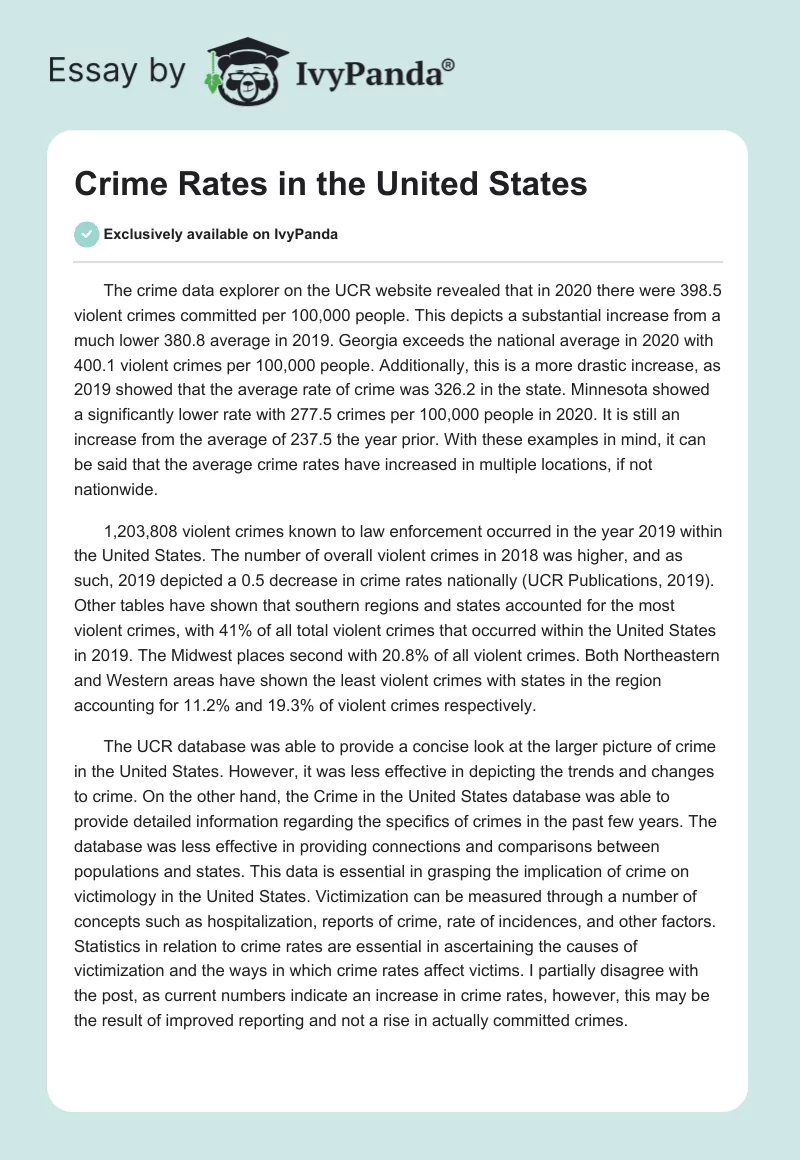The crime data explorer on the UCR website revealed that in 2020 there were 398.5 violent crimes committed per 100,000 people. This depicts a substantial increase from a much lower 380.8 average in 2019. Georgia exceeds the national average in 2020 with 400.1 violent crimes per 100,000 people. Additionally, this is a more drastic increase, as 2019 showed that the average rate of crime was 326.2 in the state. Minnesota showed a significantly lower rate with 277.5 crimes per 100,000 people in 2020. It is still an increase from the average of 237.5 the year prior. With these examples in mind, it can be said that the average crime rates have increased in multiple locations, if not nationwide.
1,203,808 violent crimes known to law enforcement occurred in the year 2019 within the United States. The number of overall violent crimes in 2018 was higher, and as such, 2019 depicted a 0.5 decrease in crime rates nationally (UCR Publications, 2019). Other tables have shown that southern regions and states accounted for the most violent crimes, with 41% of all total violent crimes that occurred within the United States in 2019. The Midwest places second with 20.8% of all violent crimes. Both Northeastern and Western areas have shown the least violent crimes with states in the region accounting for 11.2% and 19.3% of violent crimes respectively.
The UCR database was able to provide a concise look at the larger picture of crime in the United States. However, it was less effective in depicting the trends and changes to crime. On the other hand, the Crime in the United States database was able to provide detailed information regarding the specifics of crimes in the past few years. The database was less effective in providing connections and comparisons between populations and states. This data is essential in grasping the implication of crime on victimology in the United States. Victimization can be measured through a number of concepts such as hospitalization, reports of crime, rate of incidences, and other factors. Statistics in relation to crime rates are essential in ascertaining the causes of victimization and the ways in which crime rates affect victims. I partially disagree with the post, as current numbers indicate an increase in crime rates, however, this may be the result of improved reporting and not a rise in actually committed crimes.
Reference
UCR Publications. 2019 crime in the United States [Data set]. Web.


